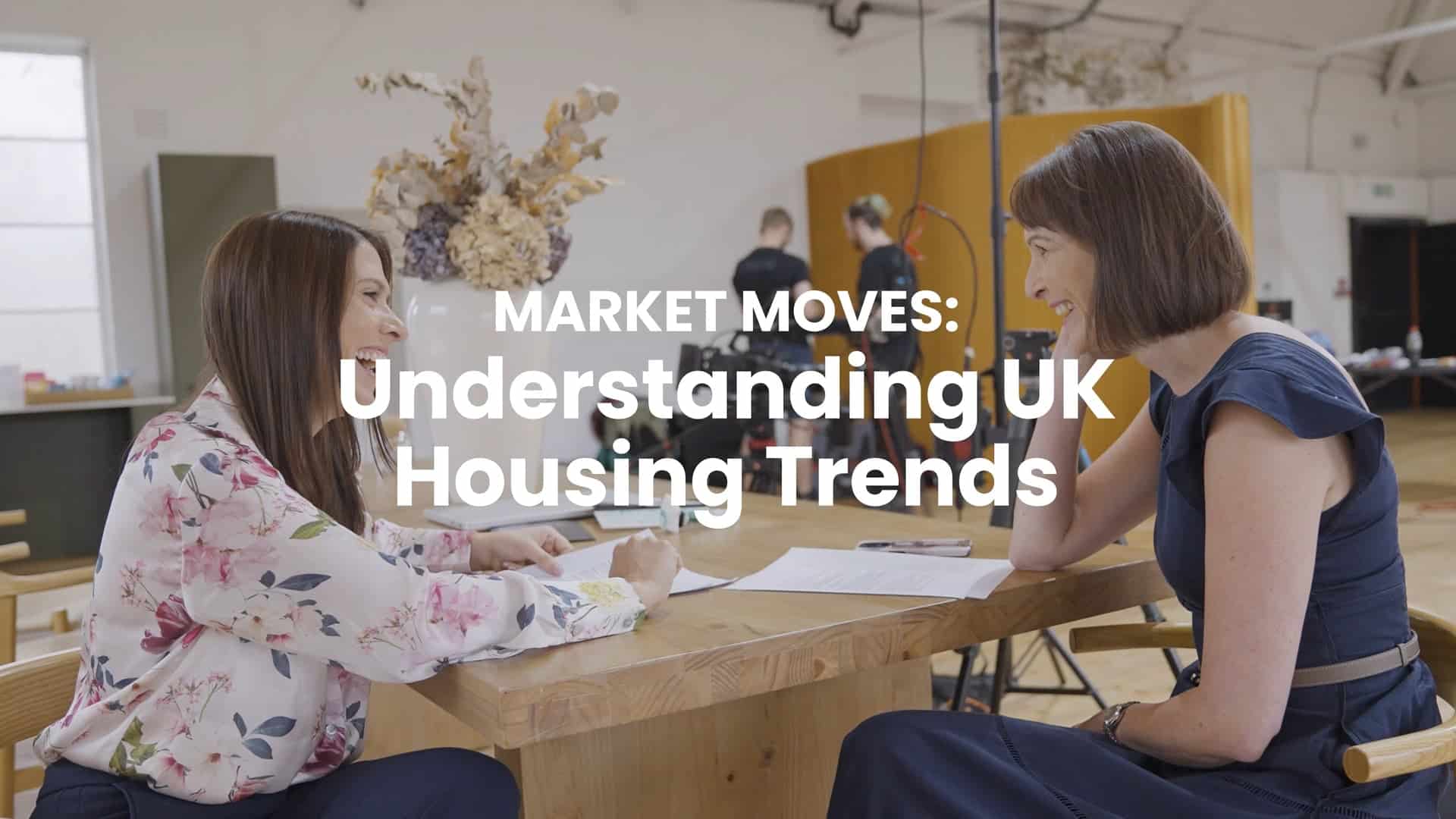In August, average house prices in the UK rose 1.5% monthly and 2.8% annually to £292,924, government data showed.
The Office for National Statistics’ (ONS’) house price index for the month found this was higher than the 1.8% yearly growth seen in the 12 months to July, and put average house prices £8,000 higher than the year before.
House prices increase across most regions
Across England, average house prices came to £309,572 in August, 2.3% higher than the same month last year and 1.6% up on the previous month.
Of the English regions, annual house price inflation was highest in the North West, where there was a 4.6% jump to £225,248.
In England, the lowest house price inflation in August was seen in the South West, where there was a 0.8% annual rise to £320,774. The region also recorded the only monthly decline in house prices, with a 0.3% drop.

Market Moves: Understanding UK Housing Trends
Introducing the first in our video series “Market Moves: Understanding UK Housing Trends” The
Sponsored by Halifax Intermediaries
Yorkshire and the Humber reported the strongest monthly increase in house prices in England, with a 2.7% increase to £219,433. Annually, house prices in this region rose by 4.4%.
Northern Ireland saw the strongest increase in house prices, rising by 6.4% year-on-year and 3.6% quarter-on-quarter to £185,025.
Wales reported a 3.5% uplift to £222,925, which was also 2.6% higher than the previous month. In Scotland, values rose by 5.4% yearly to £199,971, which was 1.2% up on July.
Ed Phillips, CEO of Lomond, said: “A sixth consecutive month of positive house price growth demonstrates that the UK property market is very much heading in the right direction, boosted by a growing level of buyer confidence and an increased willingness to transact.
“Whilst interest rates remain a factor, we’re likely to see further cuts before the year is out and this will only strengthen the momentum that has been building across the market in 2024.”
Better rates boost the property market
Richard Harrison, head of mortgages at Atom Bank, said: “House prices have been pushed higher once more, off the back of a much more active housing market.
“While there’s no base rate decision in October, the markets continue to expect at least one more cut before the end of the year. We saw activity pick up after the first base rate cut in four years, and a second cut will only further boost interest among buyers, as mortgage rates become more attractive.
“With the Budget on the horizon, there is a great opportunity for the government to take real action in supporting the next generation of homebuyers. The ambition to deliver greater levels of house buying is welcome, but it is unlikely to be enough on its own and lenders have a role to play too. Fresh thinking is needed in order to provide would-be buyers with a better chance of getting onto, or moving up, the housing ladder.”
Rachael Hunnisett, director of mortgage distribution at April Mortgages, said the UK housing market was “warming up” and the lower cost of borrowing was “stimulating” activity.
She added: “However, affordability remains an issue for borrowers, particularly in London and parts of Southern England, where house price growth trails the rest of the UK.
“The high cost of ownership means that borrowers face an uphill challenge to meet lenders’ affordability requirements.
“Although inflation has fallen, households’ essential spending is higher than it once was and it’s proving harder for some borrowers to demonstrate their ability to meet mortgage repayments.
“Rate speculation remains rife following the latest inflation announcement. However, if the past has taught us anything, it’s that when it comes to mortgage interest rate volatility, there are a lot of variables at play.
“Homeowners coming to the end of fixed rate mortgage[s] who fixed during a historically low market could be subject to significant rate shock. By considering longer-term fixed deals, borrowers protect themselves from rate shock over a longer period and guarantee that their mortgage payment will not change, making it easier for them to plan for the future.”
Mark Harris, chief executive of SPF Private Clients, said this presented the opportunity for even lower rates, adding: “With inflation slowing to a lower-than-expected 1.7%, it’s time for the Bank of England to be bold and brave with a rate cut at November’s meeting, followed by another in December.
“Such reductions would be well-received by the market, boosting activity at a time when there is plenty of uncertainty caused by the impending Budget.”
Rises by property type
The value of semi-detached homes rose by the most over the year, going up by 3.6% to £285,310. This was followed by terraced homes, which saw a 3% increase in value to an average of £243,437.
Flats and maisonettes increased by 2.6% year-on-year to an average of £239,043, while detached homes reported a 1.7% rise to £443,355 on average.
The price of a new-build home was 25.6% higher than last year at £417,612. However, this was 0.8% lower than the month before.
Mobeen Akram, new homes director at Mortgage Advice Bureau (MAB), said the data showed “yet more positivity for the new homes – and wider housing – sector”.
She added: “It’s clear that we’re starting to enter a much more favourable market – and there are plenty of options out there for those looking to secure a new-build property.
“Overall, there is a sense of optimism in the industry – despite some hurdles we’ve yet to overcome, we’re certainly looking to end the year on a much more optimistic note.”
Resold homes rose by a more modest 1.3% annually to £282,024, just 0.5% higher than in July.
First-time buyers paid 3.4% more for their homes on average than they did last year, at a value of £246,576. This was 2% up versus the month before.
Meanwhile, former owner-occupiers paid £338,048 for their homes, a 2.1% annual increase and a 1.1% monthly rise.
People buying with a mortgage paid 3.1% more for their homes than the same month last year, averaging £305,429. This was also 1.6% more than the previous month.
Cash buyers paid an average of £276,805, 2.1% more than last year and 1.5% up on the previous month.



